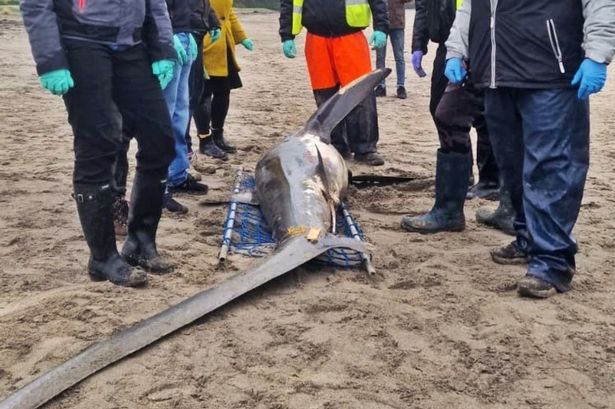The discovery of a deceased 14-foot thresher shark on New Year’s Day cast a somber pall over the start of 2024. Classified as a vulnerable species, the thresher shark’s demise serves as a stark reminder of the ongoing challenges in marine conservation. The animal exhibited severe traumatic injuries to both its upper and lower jaw, suggesting a violent encounter, the nature of which remains under investigation. This incident underscores the vulnerability of these majestic creatures in a world increasingly impacted by human activities. The thresher shark, renowned for its exceptionally long, scythe-like caudal fin, utilizes this unique appendage to stun prey, primarily schooling fish. Their presence in our oceans plays a vital role in maintaining the delicate balance of the marine ecosystem. The loss of a mature individual, particularly one of this size, represents a significant blow to the local thresher shark population.
The precise circumstances surrounding the shark’s death are yet to be fully determined. Several possibilities exist, including entanglement in fishing gear, collision with a vessel, or an encounter with a larger predator. Thresher sharks, despite their size and hunting prowess, are not immune to predation from larger species like orcas or great white sharks. The extent of the jaw injuries suggests a forceful interaction, potentially indicative of a struggle. Further investigation, including a necropsy and analysis of any recovered debris or markings, will be crucial in piecing together the events leading to the shark’s tragic end. Understanding the cause of death is not only essential for closure in this specific case but also for informing broader conservation strategies aimed at protecting the remaining thresher shark population.
Thresher sharks are classified as vulnerable by the International Union for Conservation of Nature (IUCN), indicating a heightened risk of extinction in the wild. They face numerous threats, primarily stemming from human activities. Overfishing, both targeted and as bycatch, represents a significant challenge. Their long caudal fins, prized in some cultures, make them particularly susceptible to becoming entangled in fishing nets. Habitat degradation and pollution further compound the pressures on these already vulnerable animals. Coastal development, pollution from runoff, and plastic debris in the ocean all contribute to a decline in suitable habitat and prey availability. Climate change, with its associated impacts on ocean temperatures and prey distribution, also poses a growing threat.
The loss of this individual thresher shark highlights the urgent need for enhanced conservation efforts. Sustainable fishing practices, including the use of gear designed to minimize bycatch and stricter regulations on fishing in critical habitats, are crucial. Protecting and restoring essential thresher shark habitats, such as nursery grounds and feeding areas, is paramount for the long-term survival of the species. Raising public awareness about the importance of thresher sharks and the threats they face is also critical. Educating communities about responsible fishing practices and the importance of marine conservation can empower individuals to make informed choices that benefit these magnificent creatures.
Beyond the immediate tragedy of this single shark’s death lies a broader narrative of the interconnectedness of marine ecosystems. Thresher sharks, as apex predators, play a crucial role in regulating the populations of their prey species. Their removal can have cascading effects throughout the food web, impacting the overall health and stability of the marine environment. Maintaining healthy populations of top predators like thresher sharks is essential for ensuring the resilience and biodiversity of our oceans. By protecting these keystone species, we contribute to the preservation of the intricate web of life that sustains our planet.
The discovery of the deceased thresher shark serves as a poignant reminder of the fragility of life and the importance of our stewardship of the natural world. While the specific cause of death remains under investigation, the incident underscores the numerous challenges faced by vulnerable species like the thresher shark. By understanding these challenges and working collaboratively towards solutions, we can strive to protect these magnificent creatures and ensure that future generations have the opportunity to witness their grace and power in the wild. Continued research, enhanced conservation efforts, and increased public awareness are essential for safeguarding the future of the thresher shark and the health of our oceans.














